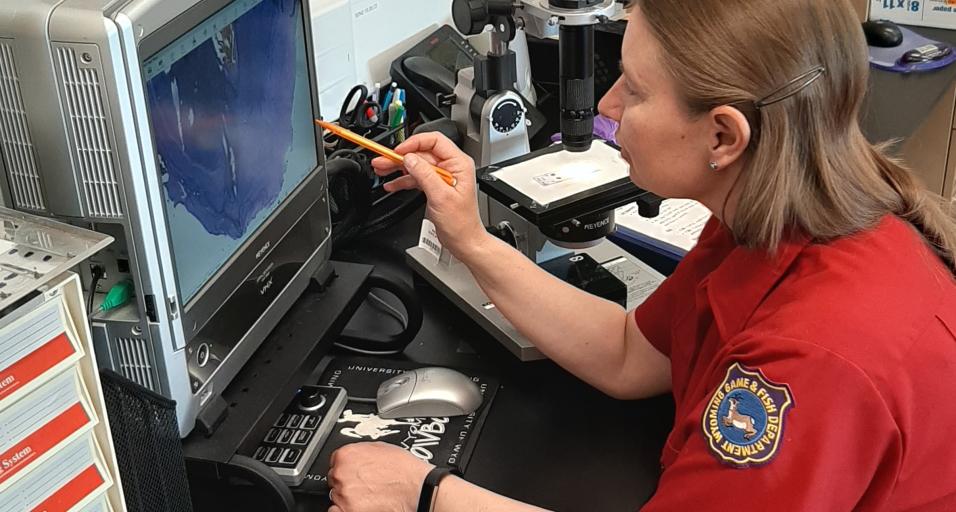The Wyoming Game and Fish Department is on-track to gather ages from more than 4,000 big game teeth from the 2020 hunting season. It’s more teeth than have ever been collected from big game harvests in the state due to increased hunter check stations efforts and research projects. Wildlife managers use this data, along with other information, to analyze age classes to make sound management decisions and learn more about population dynamics.
Molly Bredehoft coordinates the tooth aging program for Game and Fish. The program is based out of the Game and Fish Wildlife Forensic and Fish Health Laboratory in Laramie. She noted this year pronghorn tooth submissions saw the biggest boost.
“For 2020, we’ve aged 827 pronghorn teeth so far,” Bredehoft said. “That’s much higher than just a few years ago in 2018 when only six teeth were submitted and analyzed. In 2019 our number of pronghorn teeth increased to over 500 due to a collaborative research project with the University of Wyoming, and this year's high numbers are due to the continuation of the research.”
This year, the oldest hunter-harvested pronghorn was 13.5 years old. For other big game, the oldest recorded ages for 2020 harvests are:
- Elk - 16.5 years old
- White-tailed deer - 12.5 years old
- Mule deer - 12.5 years old
- Moose - 11 years old
Bison ages will be available at the beginning of April. Other species, like bobcat, mountain lion and black bear will be available later in the year.
Teeth from wildlife are analyzed using a technique called cementum annuli analysis tooth-aging. The annuli are deposited in layers in the root of an animal’s tooth each winter and are counted to help determine the age of the animal.
“This method is similar to counting rings on a tree,” Bredehoft said.
Certain teeth are preferred for aging for different species. Game and Fish needs both first incisors for mule deer, white-tailed deer, elk, moose, bison and other ungulate species.
Hunters who submitted a tooth sample can easily check their individual results online by logging into their Game and Fish account with their username and password. Creating a username and password is a simple process much like on other websites. To help, Game and Fish has step-by-step videos and written instructions. Hunter data will be linked automatically, including tooth aging results. Hunters can also use their license number, name and date of birth. A listing of ages by species is also available for anyone to browse.
Bredehoft cautioned hunters to not be discouraged if they don’t see their submitted tooth results yet — lab personnel are continuing to post information over the coming weeks and will update reports again in March for big game. The lab is also working to update historical information for mountain lion and black bear, and for the first time, offering historical bobcat ages easily viewable online.
In addition to teeth collected annually from hunter harvests, teeth are sometimes collected by Game and Fish personnel from wildlife captured for research projects and relocations, as well as winter mortalities and road killed animals on occassion.


